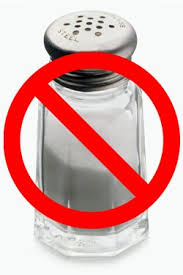A few readers may remember way back to 2005, when health experts began beating the drum to reduce the amount of salt in our diets. How did that go? Not so good. Science Daily reports that a recent study by researchers at Northwestern University found that between 2005 and 2011, the sodium content in 402 processed foods declined by approximately 3.5 percent, while the sodium content in 78 fast-food restaurant products increased by 2.6 percent. And while some products showed decreases of at least 30 percent, a greater number of products showed increases of at least 30 percent. “The predominant finding,” the researchers write, “was the absence of any appreciable or statistically significant changes in sodium content during six years.” Why do we care? Because, the researchers remind us, the typical American consumes an average of almost two teaspoons a day of salt, vastly higher than the recommended amount of three-fifths of a teaspoon or no more than 1,500 milligrams, as recommended by the American Heart Association. About 80 percent of our daily sodium consumption comes from eating processed or restaurant foods. Very little comes from salt we add to food.
reports that a recent study by researchers at Northwestern University found that between 2005 and 2011, the sodium content in 402 processed foods declined by approximately 3.5 percent, while the sodium content in 78 fast-food restaurant products increased by 2.6 percent. And while some products showed decreases of at least 30 percent, a greater number of products showed increases of at least 30 percent. “The predominant finding,” the researchers write, “was the absence of any appreciable or statistically significant changes in sodium content during six years.” Why do we care? Because, the researchers remind us, the typical American consumes an average of almost two teaspoons a day of salt, vastly higher than the recommended amount of three-fifths of a teaspoon or no more than 1,500 milligrams, as recommended by the American Heart Association. About 80 percent of our daily sodium consumption comes from eating processed or restaurant foods. Very little comes from salt we add to food.
